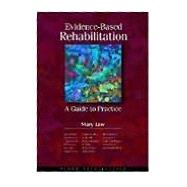
| Dedication | v | ||||
| Acknowledgments | ix | ||||
| About the Editor | xi | ||||
| Contributing Authors | xiii | ||||
| Preface | xv | ||||
| Section I Introduction to Evidence-Based Practice | |||||
|
3 | (10) | |||
|
|||||
|
13 | (18) | |||
|
|||||
|
|||||
|
31 | (18) | |||
|
|||||
|
|||||
| Section II Finding the Evidence | |||||
|
49 | (22) | |||
|
|||||
|
|||||
|
|||||
|
71 | (26) | |||
|
|||||
| Section III Assessing the Evidence | |||||
|
97 | (12) | |||
|
|||||
|
|||||
|
109 | (18) | |||
|
|||||
|
|||||
|
127 | (44) | |||
|
|||||
|
|||||
|
|||||
|
|||||
|
|||||
|
|||||
|
|||||
|
171 | (14) | |||
|
|||||
| Section IV Using the Evidence | |||||
|
185 | (10) | |||
|
|||||
|
195 | (26) | |||
|
|||||
|
221 | (34) | |||
|
|||||
|
255 | (14) | |||
|
|||||
|
|||||
|
269 | (18) | |||
|
|||||
| Appendix A Outcome Measures Rating Form | 287 | (12) | |||
| Appendix B Outcome Measures Rating Form Guidelines | 299 | (6) | |||
| Appendix C Critical Review Form for Quantitative Studies | 305 | (4) | |||
| Appendix D Guidelines for Critical Review Form: Quantitative Studies | 309 | (14) | |||
| Appendix E Critical Review Form for Qualitative Studies | 323 | (6) | |||
| Appendix F Guidelines for Critical Review Form: Qualitative Studies | 329 | (10) | |||
| Appendix G Instructions for the Use of the Functional Independence Measure Decision Trees | 339 | (2) | |||
| Appendix H Clinical Pathway Example | 341 | (4) | |||
| Appendix I Variance Record Example | 345 | (2) | |||
| Appendix J Client Outcomes Example | 347 | (2) | |||
| Appendix K Key Indicator Record Example | 349 | (2) | |||
| Appendix L Template for the Development of Clinical Pathways: Key Indicators | 351 | (2) | |||
| Appendix M Template for the Development of Clinical Pathways: Timeline | 353 | (2) | |||
| Appendix N Developing Outcomes | 355 | (2) | |||
| Index | 357 |
The New copy of this book will include any supplemental materials advertised. Please check the title of the book to determine if it should include any access cards, study guides, lab manuals, CDs, etc.
The Used, Rental and eBook copies of this book are not guaranteed to include any supplemental materials. Typically, only the book itself is included. This is true even if the title states it includes any access cards, study guides, lab manuals, CDs, etc.